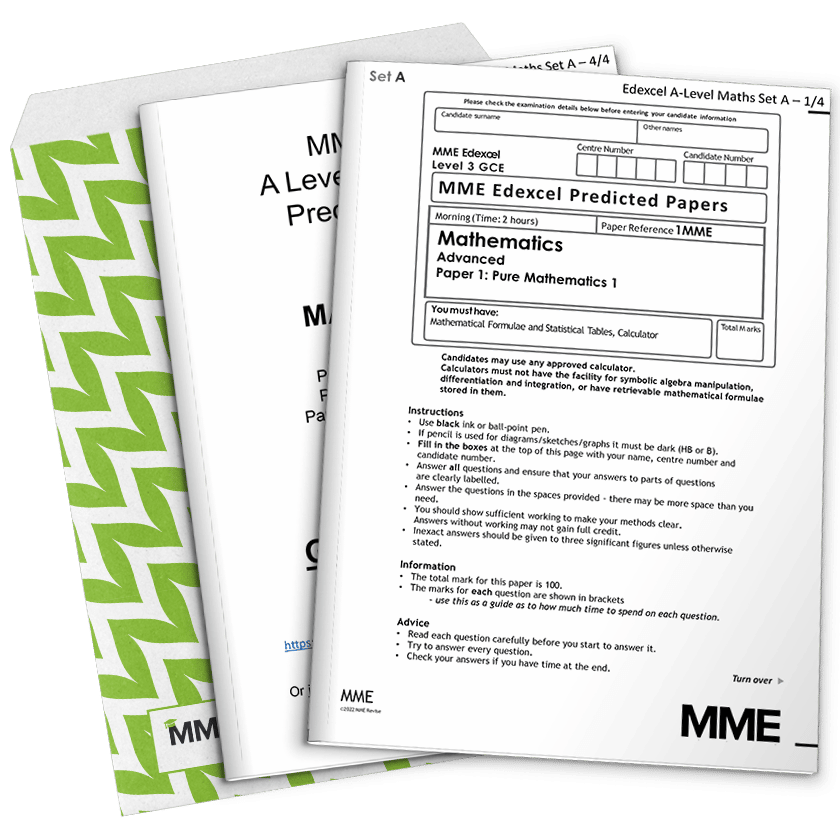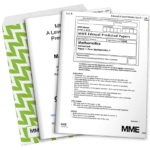Arithmetic Series
Arithmetic Series Revision
Arithmetic Series
A series is a sequence where the goal is to add all the terms together. We will study arithmetic series and geometric series.
Recall: Notation from Sequences:
a is first term
d is difference, the amount we add each time
n is the number of terms in the series
We will also introduce l, which is the last term of the series. Since there are n terms in the series and we have an nth term equation for arithmetic sequences, we have a formula for l:
l=a+(n-1)d
Make sure you are happy with the following topics before continuing.
Adding the Terms
The sum of an arithmetic series with n terms is:
S_{n}=\dfrac{n(a+l)}{2}
We can prove this result:
\begin{aligned}S_{n}&=a+(a+d)+(a+2d)+...+(l-d)+l\\[1.2em]&=l+(l-d)+(l-2d)+...+(a+d)+a\\[1.2em]2S_{n}&=(a+l)+(a+l)+(a+l)+...+(a+l)+(a+l)\\[1.2em]S_{n}&=\dfrac{n(a+l)}{2}\end{aligned}
If we substitute in our formula for l, we get:
S_{n}=\dfrac{n}{2}(2a+(n-1)d)
Sum Notation
\sum means sum, and we can use it instead of writing S_{n} to represent arithmetic series.
Example: \sum_{n=1}^{20}(3n+4) means the sum up to the 20th term of the arithmetic progression defined by 3n+4.
Natural Number Arithmetic Progressions
The sum of the first n natural numbers (positive whole numbers) is:
S_n = 1 + 2 + 3 + ... + (n-1) + n
So a=1, l = n and n = n.
If we put these values into the formula we have already seen, we would get:
S_n = \dfrac{1}{2} n (n+1)
Example 1: Arithmetic Series in Practice
Jon is training for a marathon. Last week his furthest run was 4 miles. He plans to increase the length he runs by 1.1 miles per day. What is the total distance he has run by the time he reaches his goal of 26 miles?
[2 marks]
a=4
d=1.1
l=26
Find number of terms between a and l
n=\dfrac{26-4}{1.1}=\dfrac{22}{1.1}=20
Need to add 1 because both the first and last terms are included.
n=21Substitute into formula:
\begin{aligned}S_{n}&=\dfrac{n(a+l)}{2} \\[1.2em] S_{21}&=\dfrac{21(4+26)}{2}\\[1.2em]&= \dfrac{21\times 30}{2}\\[1.2em]&=\dfrac{630}{2}\\[1.2em]&=315 \text{ miles} \end{aligned}
Example 2: Sum Notation
Find \sum_{n=1}^{50}(3n+4)
[2 marks]
This means the sum of the first 50 terms of the sequence defined by 3n+4.
a=3\times 1+4=3+4=7
d=3
n=50
Substitute into formula:
\begin{aligned}\sum_{n=1}^{50}(3n+4)&=\dfrac{50}{2}(2\times 7+(50-1)3)\\[1.2em]&=25(14+49\times 3)\\[1.2em]&=25(14+147)\\[1.2em]&=25\times 161\\[1.2em]&=4025\end{aligned}
Arithmetic Series Example Questions
Question 1: Consider the sum of the first k natural numbers.
i) Express this in sum notation.
ii) Find a formula for the sum in terms of k.
iii) What is the value of this sum when k=100?
iv) If the sum has value 55, what is the value of k?
[8 marks]
i) \sum_{n=1}^{k}n
ii) Arithmetic progression with:
a=1
d=1
n=k
Sub into formula:
\begin{aligned}\sum_{n=1}^{k}n&=\dfrac{k}{2}(2\times 1+(k-1)1)\\[1.2em]&=\dfrac{k}{2}(2+k-1)\\[1.2em]&=\dfrac{k(k+1)}{2}\end{aligned}
iii) k=100
\begin{aligned}\sum_{n=1}^{100}n&=\dfrac{100(100+1)}{2}\\[1.2em]&=\dfrac{100\times 101}{2}\\[1.2em]&=\dfrac{10100}{2}\\[1.2em]&=5050\end{aligned}
iv) \sum_{n=1}^{k}n=55
\dfrac{k(k+1)}{2}=55
k(k+1)=110
k^{2}+k=110
k^{2}+k-110=0
(k-10)(k+11)=0
k=10 or k=-11
-11 not feasible
k=10
Question 2: Find the sum of the first ten terms of the arithmetic series that begins
3,8,13,18...[3 marks]
a=3
d=5
n=10
Substitute into formula:
\begin{aligned}S_{n}&=\dfrac{10}{2}(2\times 3+(10-1)5)\\[1.2em]&=5(6+9\times 5)\\[1.2em]&=5(6+45)\\[1.2em]&=5\times 51\\[1.2em]&=255\end{aligned}
Question 3: At the start of every month, Jenny deposits an amount of money into her savings account. The first month she put in £10, the second month £20, the third month £30, and so on. How much does she have saved after 2 years?
[4 marks]
2 years is 24 months.
a=10
d=10
n=24
Substitute into formula:
\begin{aligned}S_{n}&=\dfrac{24}{2}(2\times 10+(24-1)10)\\[1.2em]&=12(20+23\times 10)\\[1.2em]&=12(20+230)\\[1.2em]&=12\times 250\\[1.2em]&=3000\end{aligned}
Question 4: For an arithmetic series with first term 9 and difference 4, the sum is 184. Find the number of terms.
[3 marks]
S_{n}=184
a=9
d=4
Substitute into formula:
\dfrac{n}{2}(2\times 9+(n-1)4)=184
n(18+4n-4)=368
n(14+4n)=368
4n^{2}+14n=368
4n^{2}+14n-368=0
2n^{2}+7n-184=0
(n-8)(2n+23)=0
n=8 or n=-\dfrac{23}{2}
n=-\dfrac{23}{2} not feasible
n=8
Question 5: The sum of the first k natural numbers is 325. Find the value of k.
[2 marks]
\dfrac{1}{2}k (k+1) = 325
k^2 + k = 650
k^2 + k - 650 = 0
(k+26)(k-25) = 0
k cannot be negative so k = 25.
You May Also Like...

MME Learning Portal
Online exams, practice questions and revision videos for every GCSE level 9-1 topic! No fees, no trial period, just totally free access to the UK’s best GCSE maths revision platform.






